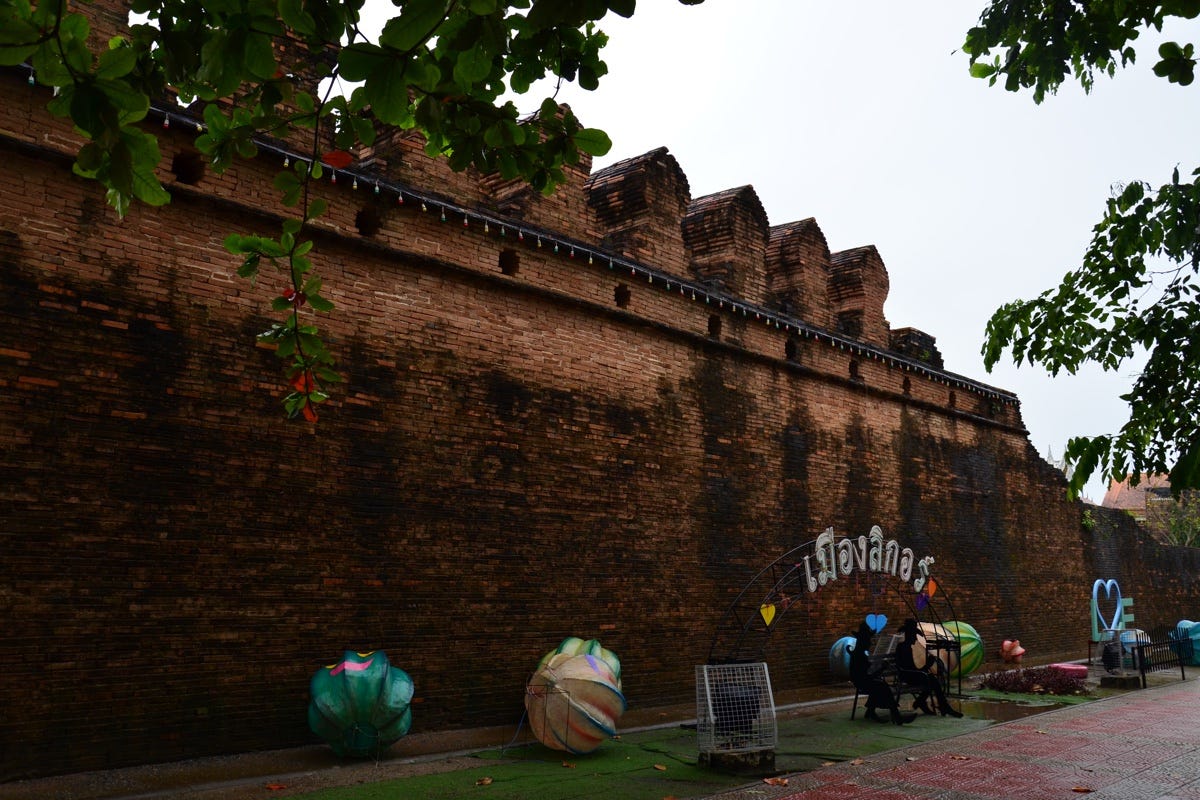I mentioned the other day that Nakhon Si Thammarat isn’t only a provincial capital but a historical one as well. With a spare day, you can walk the lay of the land from bottom to top and make your way through the history of the town.
Nakhon Si Thammarat’s glory days hark back to the Srivijaya period. Centred on Sumatra in modern–day Indonesia, the Buddhist empire’s influence spanned the 7th to 12th centuries. It was the first to hold sway over much of the Malay Archipelago—of which southern Thailand was not a part—not that that appeared to bother them. While the empire waned as Majapahit came to prominence, relics remain—including in Nakhon.
There are worse places to start the day than at Hao Coffee. Photo: David Luekens.
The best place to get a primer on this period is at the Nakhon Si Thammarat National Museum in the southern reaches of town. The museum doesn’t only cover the Srivijaya period but also features finds dating back some 6,500 years. Other displays include shadow puppets and Ming dynasty ceramics—evidence of its role as a trade centre. Once you’re done, trundle not too far to Wat Thao Khot to see Srivijaya vestiges in situ.
About a kilometre to the north will bring you to Baan Khun Tan, a merchant’s home dating back over a century. For a spell it was a school, but more recently was re–opened as a historic attraction. Nearby is the first food stop of the walk—Khanom Jeen Sen Sod. You’re welcome.
Meet Ban Khun Tan. Photo: David Luekens.
A few hundred metres north will bring you to Nakhon’s heart, Wat Phra Mahathat. Established by Sri Lankan–ordained monks in the 12th century, this temple cemented the new town’s growing importance. Writes Joe Cummings in Buddhist Temples of Thailand:
“An overland route between the western port of Trang and eastern port of Nakhon Si Thammarat became a major trade link between Thailand and the rest of the world, as well as between the western and eastern hemispheres and the city flourished.”
Next stop heading north is Suchart Subsin’s House of Shadow Puppetry (which I covered the other day), showing this is as much a cultural walk as a religious one.
The many spires of Wat Mahathat. Photo: David Luekens.
On the way to your lunch break at Tha Ma Market, swing by the city’s most revered Buddha image Phra Phutthasihing.
Continuing north, we swing from Buddhism to Hinduism. At Ho Phra Isuan you can see both a linga and a bronze dancing Shiva. These are replicas, but that doesn’t reduce the reverence they receive. Right by these sits Sao Chingcha—a giant swing similar (though considerably smaller) to Bangkok’s Giant Swing. Featuring in a Brahmin festival, swingers would go as high as they could to try and grab a bag of gold. In Bangkok’s take, some swung to their death.
Never say no to khanom jeen. At Khanom Jeen Sen Sod. Photo: David Luekens.
Keep tracking north and you’ll eventually reach remnants of the original city wall. While not in as good a condition as Chiang Mai’s, the five metre tall wall dates to the 12th century.
Near the TAT office sits Kanlayanee Si Thammarat School and behind it is a pond named Sa Lang Dap Sri Prat. The story goes that the 17th century poet Sri Prat was exiled to Nakhon from Ayutthaya by King Narai. Once in town, he slept with someone he wasn’t supposed to, annoying Nakhon’s ruler—not surprising given the woman was one of his minor wives. The ruler condemned him to execution and he was beheaded. The blade that dealt the death blow was washed in this pond.
Old wall made new. Photo: David Luekens.
Legend has it that while blindfolded and awaiting the executioner’s blade, Sri Prat wrote a poem in the sand with his toe. It read:
“Bear me witness, ye Earth,
Spite not God’s image in man.
If wrong I did, let this sword fall true and sharper,
If wronged I am, let it strike back the striker.”
When King Narai heard that Sri Prat had quite literally lost his head, he not only had the ruler beheaded, but with the same blade as well. Yes, you guessed it, the blade got rinsed off in the same pond—not all are agreed on this, but it makes for a good story.
Yamia Mosque. Photo: David Luekens.
Onwards and it doesn’t take long to hit another faith. The beautiful Yamia Mosque sits testament to the growing Muslim population in the region. North again and Phra Chedi Yok, a Sri Lankan–style chedi which is thought to date back to the same period as Wat Phra Mahathat. The foundations are believed to be original, but the top toppled off in the 1970s—they just don’t build these things like they used to.
Last stop is Wat Wan Tawan Tok. Its award winning architecture dates back to the late 19th century making it a baby by Nakhon’s standards. The wooden kuti (monks’ quarters) are especially noteworthy.
Wonderful woodwork at Wat Wan Tawan Tok. Photo: David Luekens.
All this walking will get the stomach rumbling—head to Krua Talay for a seafood dinner. Writes David:
“Cockles, prawns and squid are grilled over a charcoal stove out on the footpath, while mussels are steamed in steel pots with lemongrass, basil, kaffir lime leaf and galangal. Staff gave us some complimentary guava slices with the bill.”
Is there any better way to finish the day than with free guava?
Couchfish is 100 percent independent and reader–supported. Please feel free to share this story with a friend. Thank you!




















Share this post